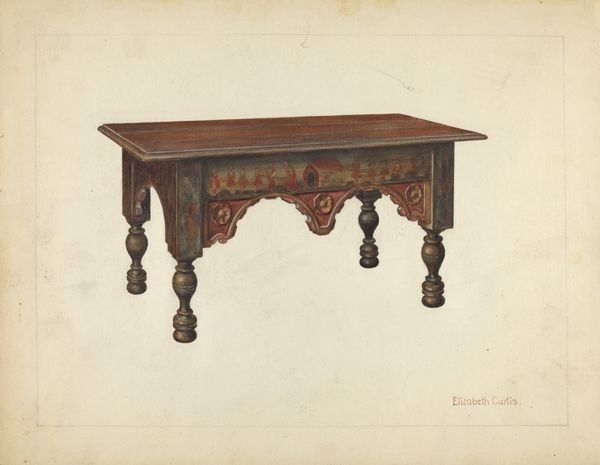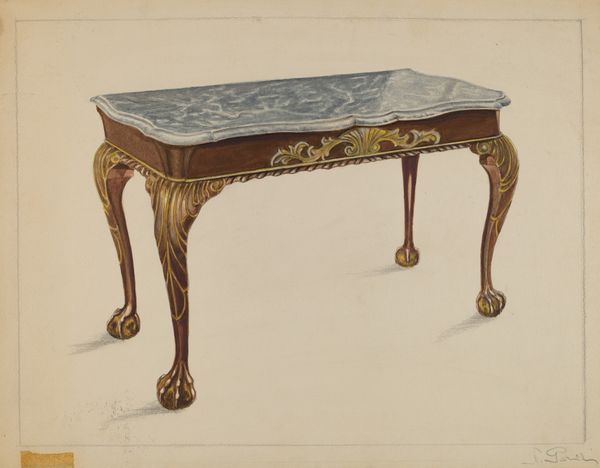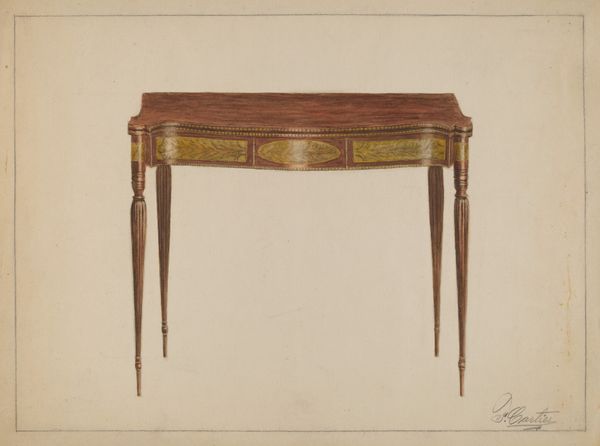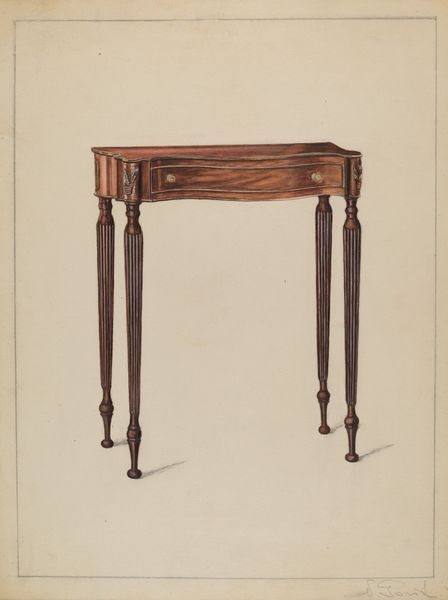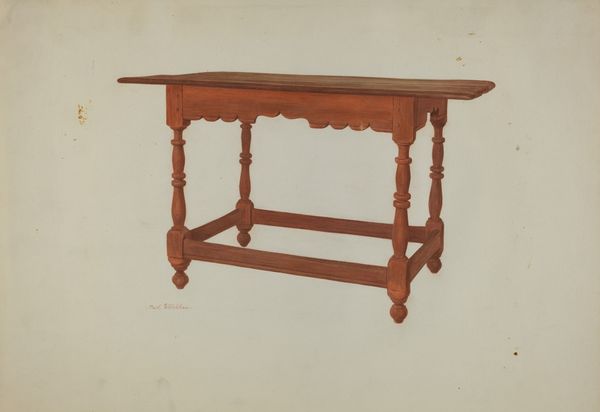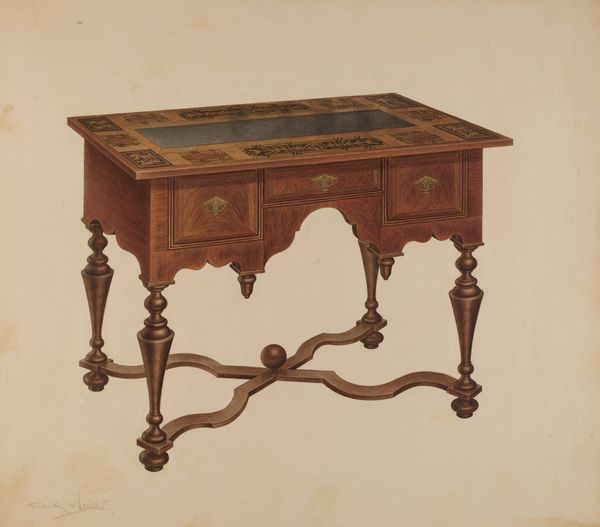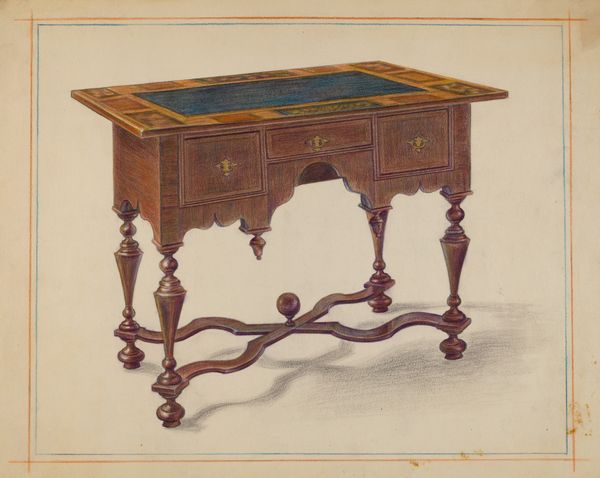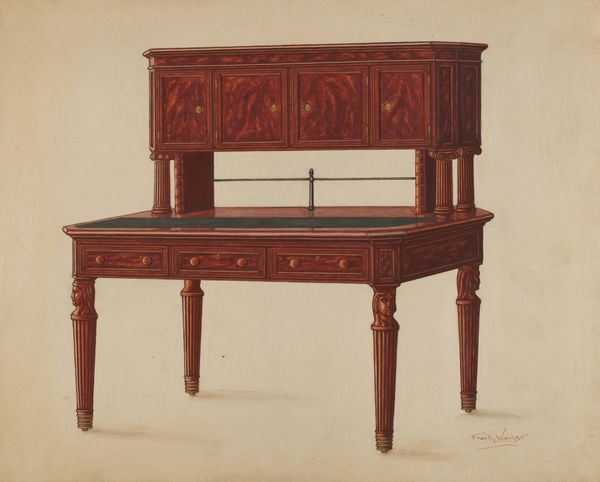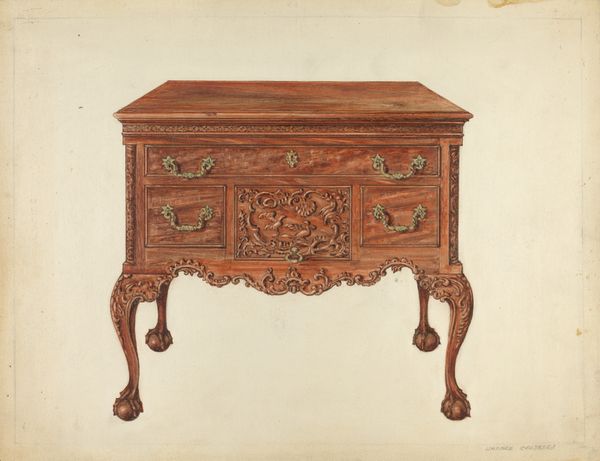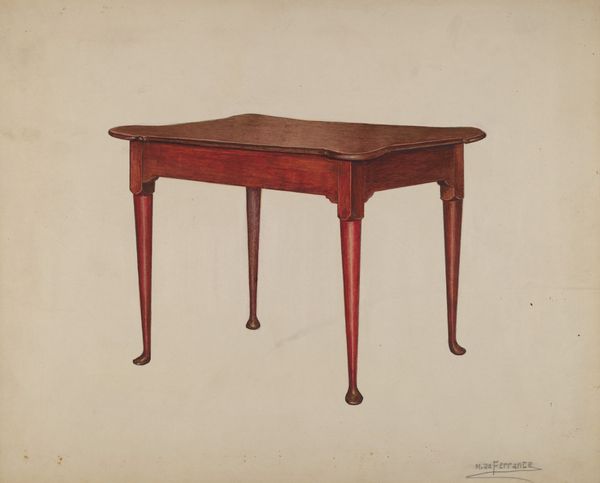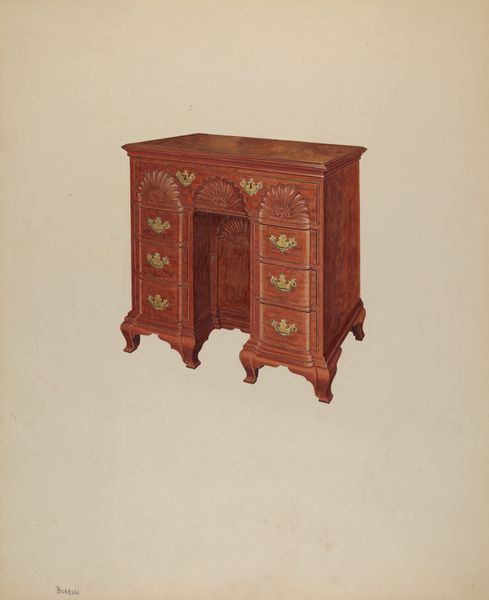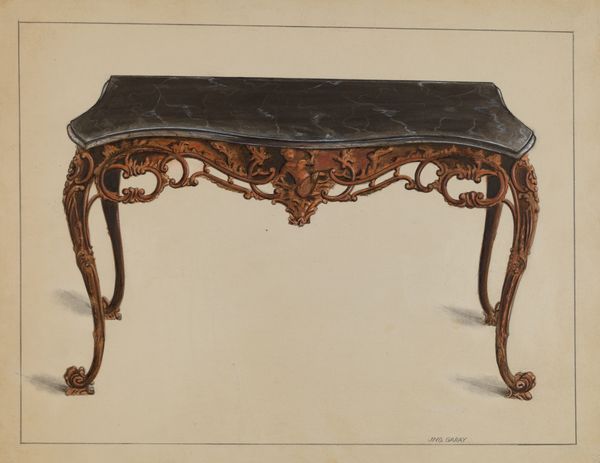
drawing, watercolor
#
drawing
#
water colours
#
landscape
#
watercolor
#
academic-art
#
watercolor
Dimensions: overall: 23.1 x 29 cm (9 1/8 x 11 7/16 in.)
Copyright: National Gallery of Art: CC0 1.0
Curator: Here we have "Bench," a watercolor work created circa 1936. It was rendered by Philip Johnson. Editor: Well, my immediate impression is one of grounded stillness. The color palette is quite muted, almost monastic, giving a sense of restrained elegance despite its simple subject. Curator: The social climate of the 1930s, marked by economic hardship, certainly impacted artistic production. Johnson, amidst this backdrop, seems to be exploring domesticity, perhaps seeking comfort in the simple forms of functional objects like this bench. It makes one wonder what a bench signified at a time of great social precarity, of poverty and bread lines, for whom was this bench conceived? Editor: The execution is intriguing. The use of watercolor allows for soft gradations of light and shadow, enhancing the dimensionality of what would otherwise be a rather basic geometric form. There's also a clear interest in textures – notice how the grain of the wood is subtly evoked. I am wondering to which movement, to which kind of structure we could connect it, if any. Curator: The very choice of a utilitarian object—a bench—raises interesting questions about the value we assign to labor, design, and accessibility. Johnson was of course interested in architecture. Are there architectural movements which were influential to his artistic process? Does this form promote dialogue with marginalized bodies? Editor: The semiotic play is fairly straightforward but effective. The dark browns and grays of the wood ground the object, lending it a sense of weight. The use of shadow provides dimensionality that elevates the everyday. This allows us to dive deeper into what the artist attempted to do. Curator: Ultimately, situating this "Bench" within its era invites consideration of broader sociopolitical narratives of utility, privilege, and domesticity. These themes extend far beyond a single art object, prompting us to interrogate what, and who, it really represents. Editor: On my side, my reflection returns to the piece’s fundamental components: shape, colour, light. Each element has been manipulated with incredible care, contributing to the piece's general impression of unpretentious sophistication and contemplative quietude.
Comments
No comments
Be the first to comment and join the conversation on the ultimate creative platform.
